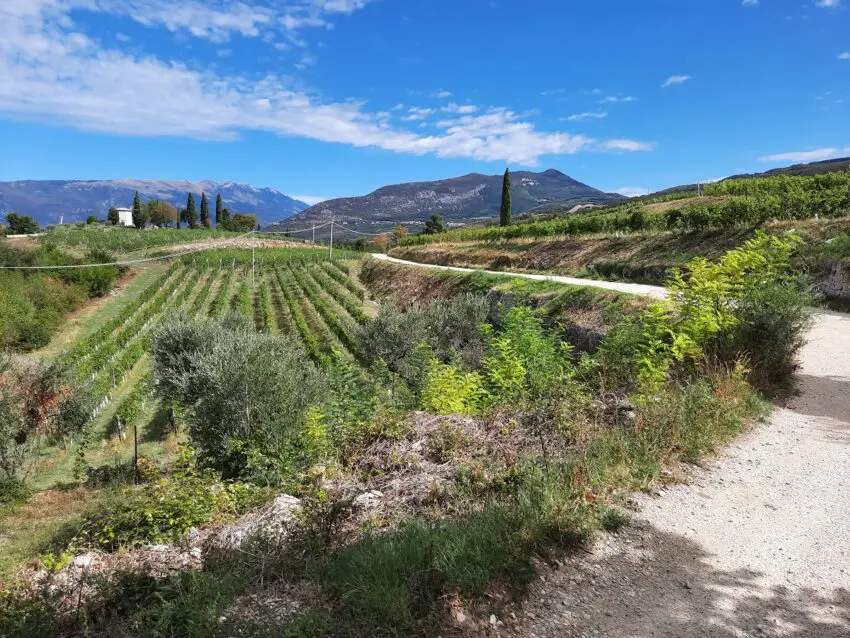Italian cities are usually chock-full of culture and history, which makes them such fun places to explore, but after a while it’s likely that you’ll fall prey to that old museum fatigue. In our experience, there’s no better way to replenish our energy than by taking tours of the beautiful countryside surrounding the cities.
The Valpolicella Region north of Verona offers a quick escape from the city’s sweltering heat in summer, as well as the hordes of tourists flocking to Romeo and Juliet’s Balcony and other sights in town. This feels like a different world, living by its own daily rhythm and still mostly undiscovered by travelers.
It’s a cool place to explore, because with the low-lying Adige Valley, the gentle hills in the southern half and the alpine foothills in the northern half, it forms a microcosm of the Veneto Region and allows you to visit three completely different landscapes in a single day.
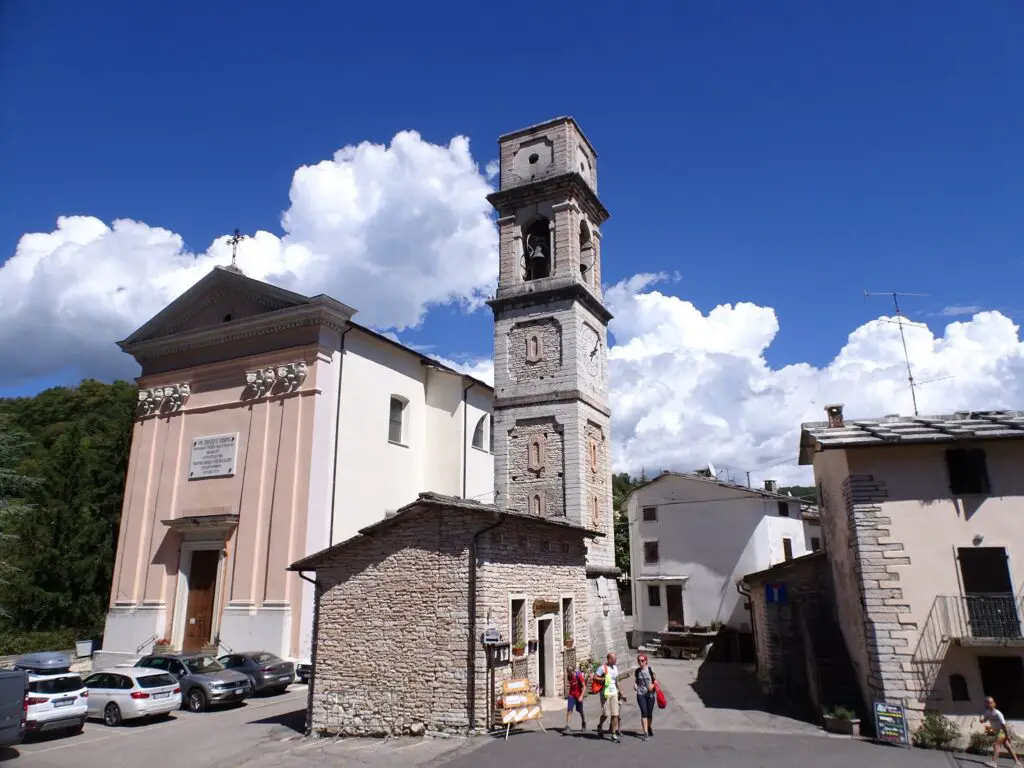
We took a day exploring the region and share some of our favourite stops with you below. We also included the Madonna della Corona Sanctuary, even though it’s slightly west of the Valpolicella Region. It’s such an impressive sight and close enough to the area that we just had to put it on the list. Read on for our recommended tour of the Valpolicella Region.
This post may contain affiliate links, and I might earn a small commission at no additional cost to you. For more info, click here.
How to Get Around in the Valpolicella Region
The easiest way to explore this rural region is by car, as this allows you to go by your own pace and spontaneously stop off in little villages along the way. Have a look below to find the best available deals on rental cars in Verona (or anywhere else).
When driving to the Madonna della Corona Sanctuary, the fastest way would be to use the Autostrada (Highway) A22. To use these roads in Italy you have to pay a toll, though, and they usually don’t offer the kinds of views the smaller roads do, so if you can spare the time I recommend using the smaller, but more picturesque alternatives.
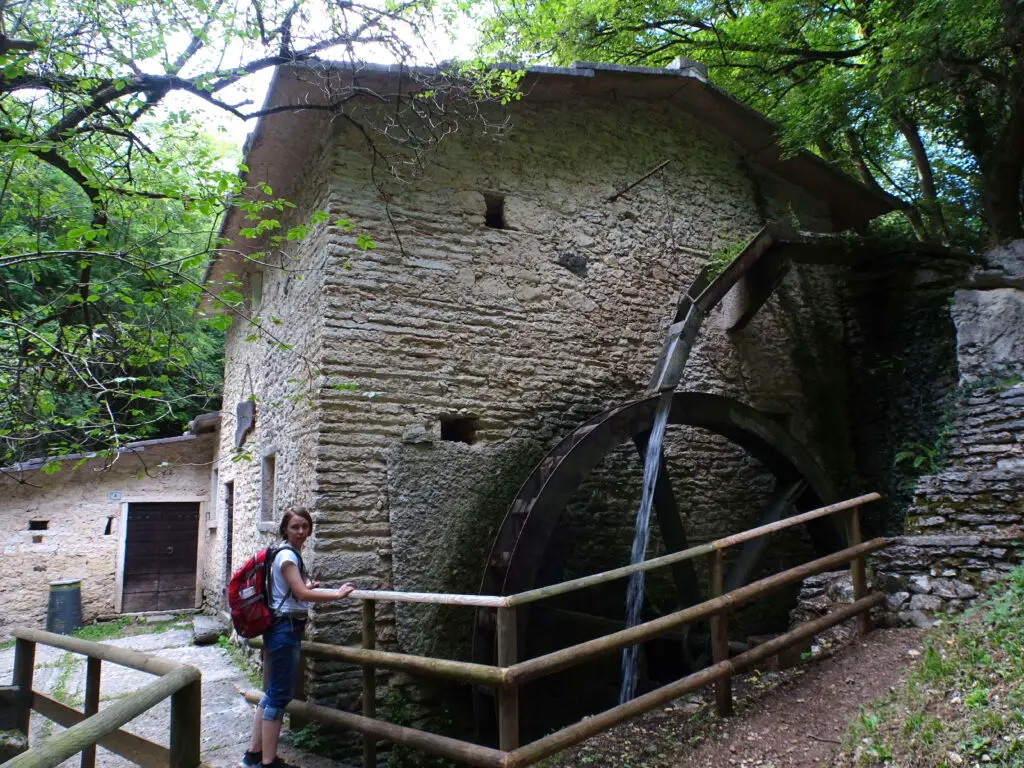
Most of the stops I’ve mentioned are also served by buses, but those are rather infrequent, so if you have to go use public transport, it’s better to pick one of the destinations and properly explore them rather than to try and cram them all in a single day (which probably can’t be done anyway).
You can check bus connections in the Verona Region on this site.
Guided Tours of the Valpolicella Area
If you’re based in Verona and want to visit the Madonna della Corona sanctuary, the easiest way would be by taking a guided half-day-tour, which includes transport, a tour guide and lunch at a local farm. There are also a couple of food and wine tours through the Valpolicella Valley available. Have a look here:
A Driving Tour of the Valpolicella Region
The Southern Valpolicella Valley
The fastest way to get to your first stop would be to join the Autostrada A22 near Casone and leave it at Rivoli Veronese, afterwards following the SP8 north to Spiazzi. However, if you can spare the time, I really recommend taking some less-frequented roads in the Valpolicella Region north of the Adige instead.
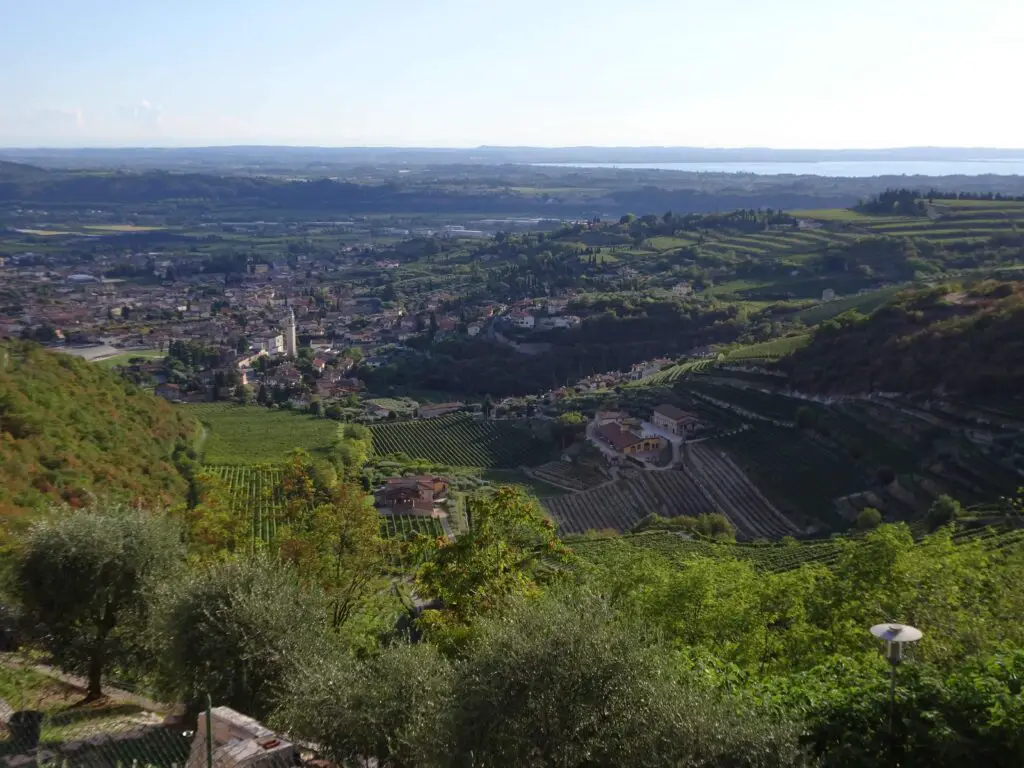
They are much more attractive and allow you to get familiar with the pretty landscape of the region right away. Quickly after leaving central Verona, the industrial suburbs give way to cute traditional villages and countless hill-slopes packed with wineries.
One option would be to take the route via Parona and Balconi to Sant’Ambrogio di Valpolicella, where you could take a short detour north to the pretty hill-town of San Giorgio di Valpolicella.
San Giorgio di Valpolicella
This small medieval hill town sports a tiny historic centre with a pretty Parish Church dating to the 11th century. In the Pieve di San Giorgio Church, I especially liked the cute cloister and the well-preserved frescoes on the walls. The intricately carved stone ciborium above the altar dates to Lombard times (8th century).
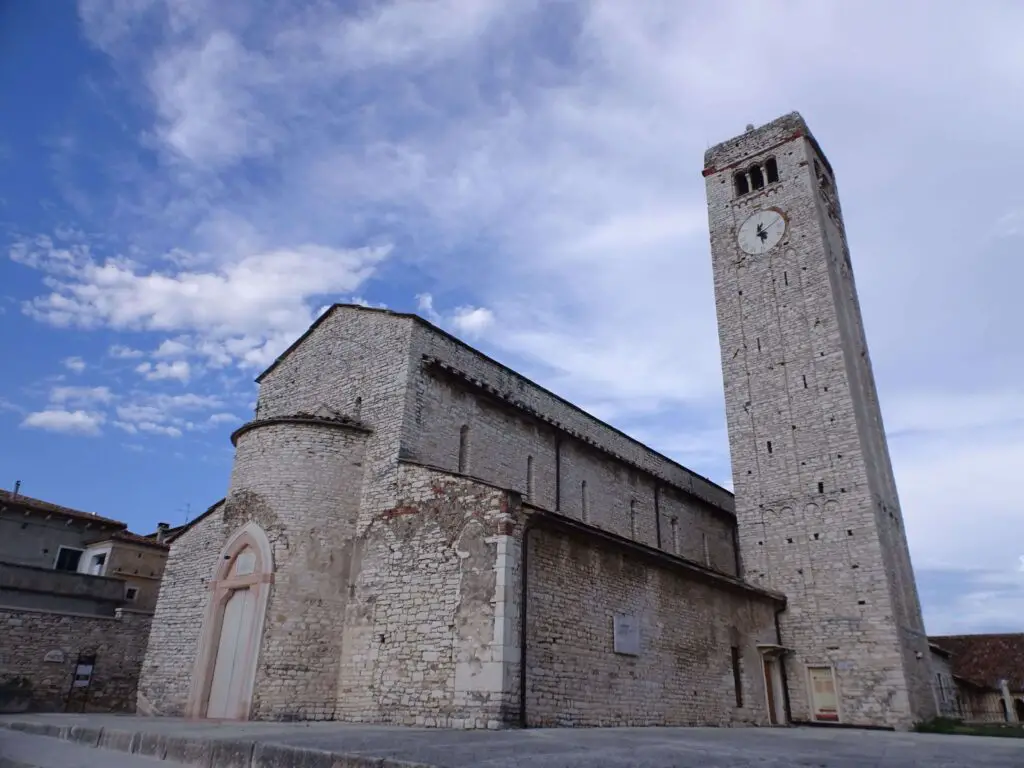
Next to the church, there’s a small archaeological museum featuring finds from excavations near the church, mostly from the Bronze Age as well as Roman times, when the area was populated by the Arusnati. There are a couple of worth-wile historical buildings around the church square, and a terrace offers a fantastic view over the Adige Valley and west to Lake Garda.
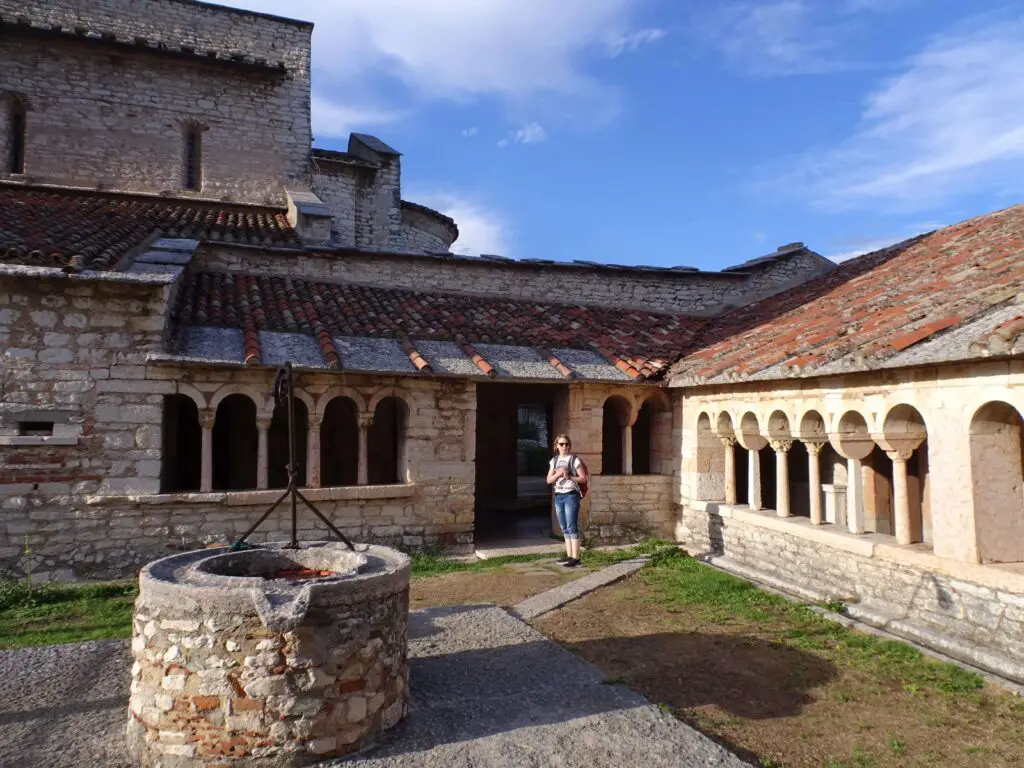
When you’re done exploring, return to Sant’Ambrogio di Valpolicella, cross the Adige at Ragano and join the SP8 further north near Caprino Veronese. At this point the road begins to slope uphill, slowly working its way up the mountains of the Monte Baldo massif by a series of switchbacks before reaching the small town of Spiazzi, the trailhead for our next stop.
Madonna della Corona Sanctuary
This basilica in the Monte Baldo region is one of the most important Catholic pilgrimage sites in northern Italy, thanks to the story that a Statue of the Virgin Mary allegedly appeared here out of thin air in the 16th century.
While you might be excused to doubt the story that it was transported there by angels from the island of Rhodos, you can’t deny the basilica’s spectacular location as it clings to a cliff-face hundreds of meters over the valley floor.
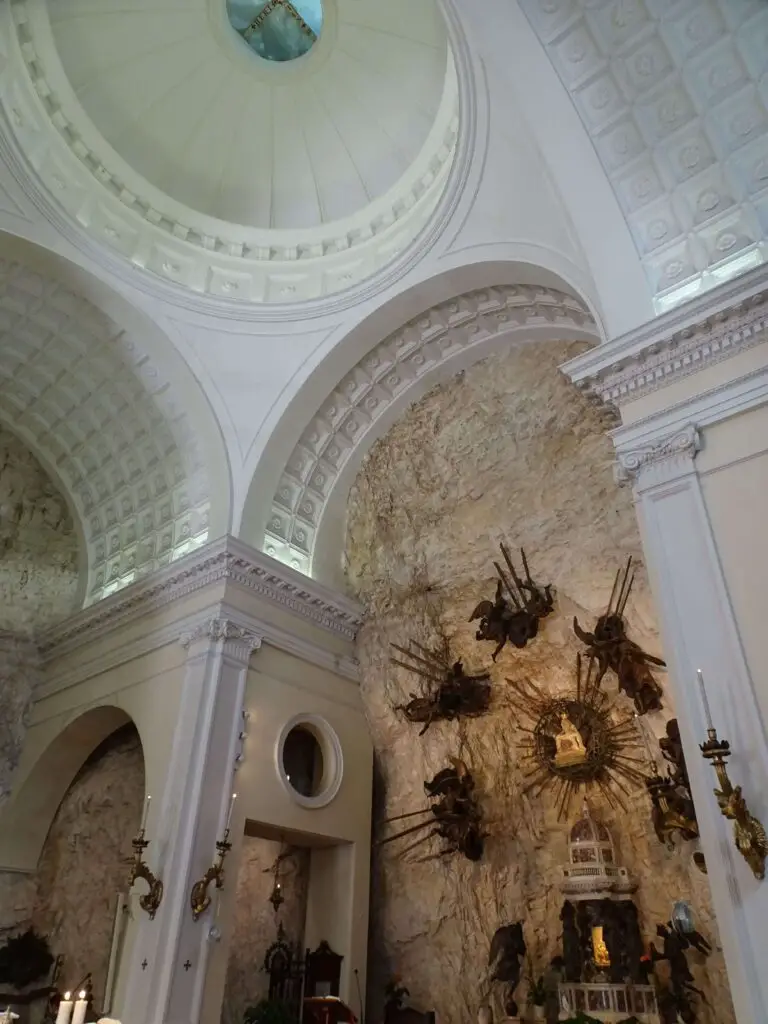
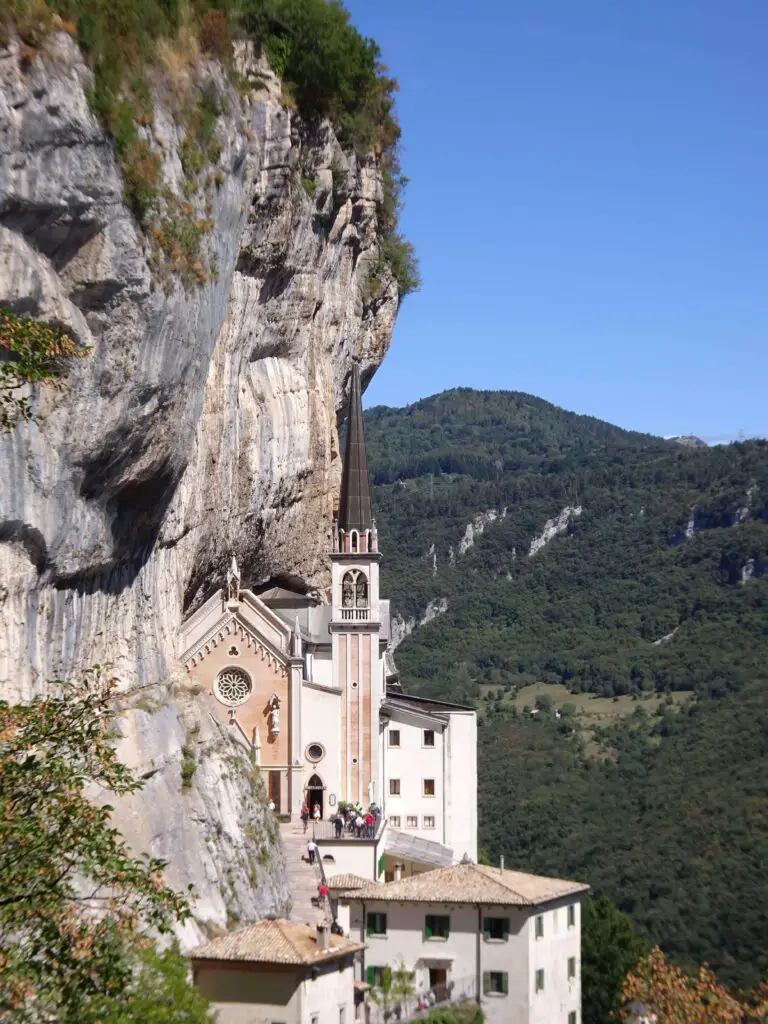
The small neo-gothic church partly incorporates the rock-face into its architecture, and we found it worth visiting not only for its unique location, but also the amazing views of the surrounding valleys and the many unusual sights spread out all over its grounds.
Check out my dedicated guide to the Sanctuary here.
Entering the Venetian Prealps
After your visit to the sanctuary, retrace the road you came on south until you meet the Autostrada A22 and the slower (and free) SP11, both of which you can follow north until you can cross the Adige to the eastern side near Borghetto sull’Adige.

A little further north, you can turn on SP211, which will quickly lead you higher into the foothills of the alps via a series of switchbacks. Take your time as the bends are very sharp, and you can’t see oncoming traffic until the last moment.
Eventually, you’ll emerge into the Venetian Prealps, which feels like a completely different world, full of cows grazing on high mountain pastures. Turn onto SP33 in Fosse and enjoy the wonderful views to the West. Near Breonio, you’ll have to take the turn-off for Molina, which you’ll reach after a couple of minutes. There’s a big car park, from where you can walk down through the cute village of Molina to the Waterfall Park.
Molina Waterfall Park
During the sweltering summer day we picked for our tour, the cool, shady Parco delle Cascate di Molina felt like a heaven-sent. Three hiking routes of varying difficulty lead to a series of waterfalls and prehistoric cave shelters. We chose the longest route, which takes about 1.5 hours to complete and passes a great look-out point over the river valley.
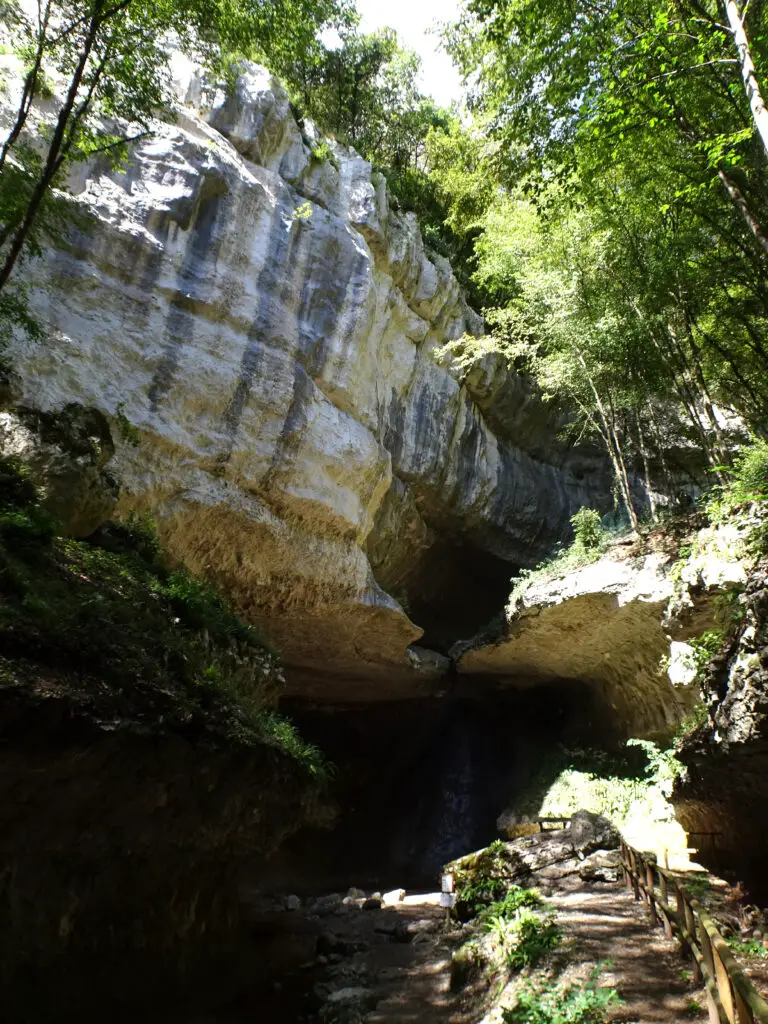
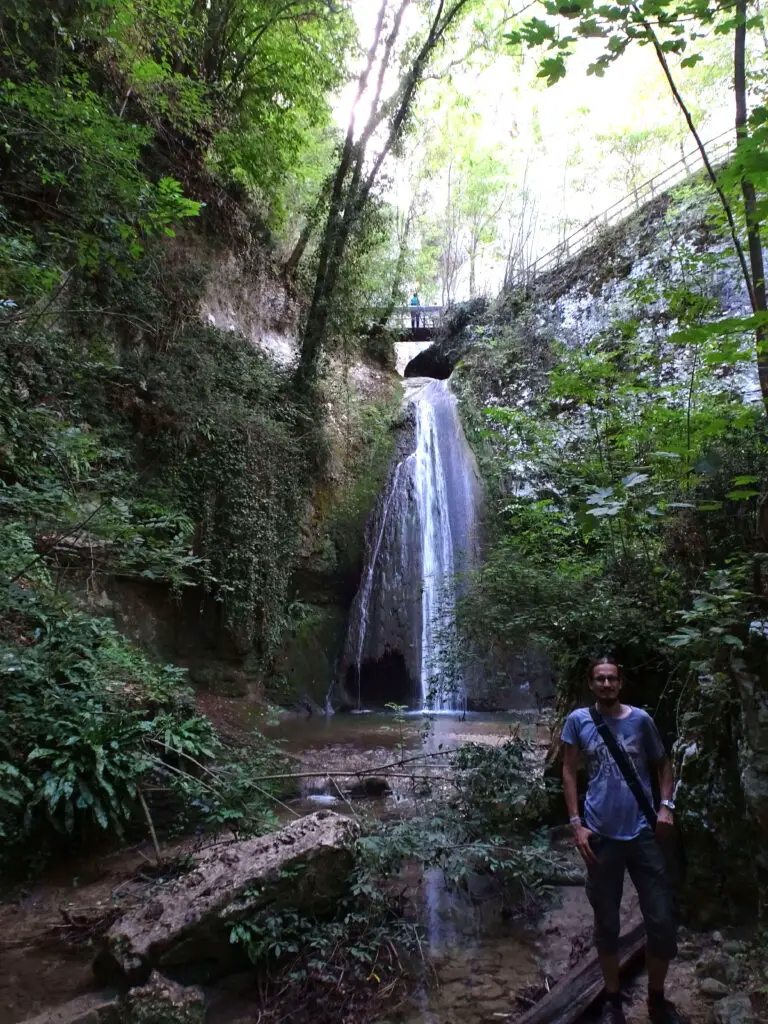
If you’re feeling peckish, there’s a small café selling drinks and snacks near the park entrance, while the village itself has a couple of small restaurants. Apart from that, I recommend checking out Molina’s cute historic core, with its pretty church square and the old watermills at the northern edge of the village.
The entrance to the Waterfall Park is 7€. The opening times vary by season, you can check them here.
Dropping by at a Winery on Your Way Back to Verona
After leaving Molina, you can follow the road south out of the village and continue until you reach Fumane. Around this town, you’ll find the highest concentration of wineries in the region, where you can sample the local product, like Nicoli’s Winery or Palazzo Montanari Winery.
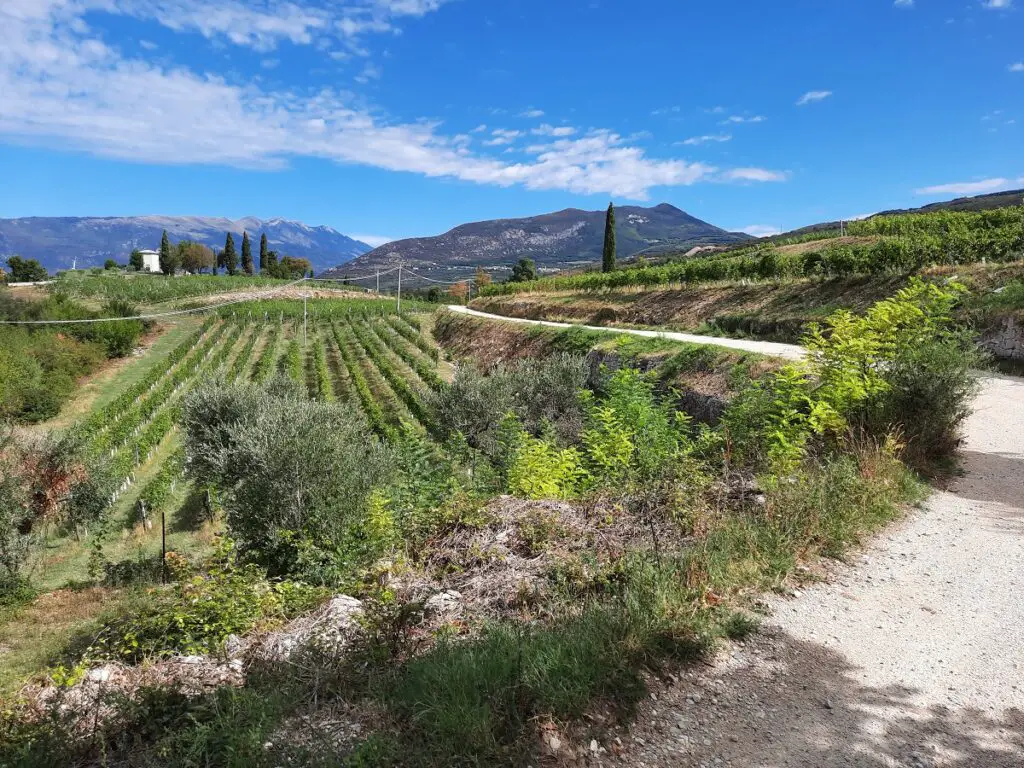
Afterwards you can continue south until you reach the Via del Brennero, which you can follow east back into Verona, where you can top off your visit with a dinner at one of the many fantastic restaurants serving local specialities, like Amarone Risotto or – if you’re there during the summer – with a visit to the Opera at the famous Roman Arena.
See also
What to know about visiting the locations from Romeo and Juliet in Verona, Italy
The 4 Must-See Churches in the UNESCO-listed centre of Verona, Italy
